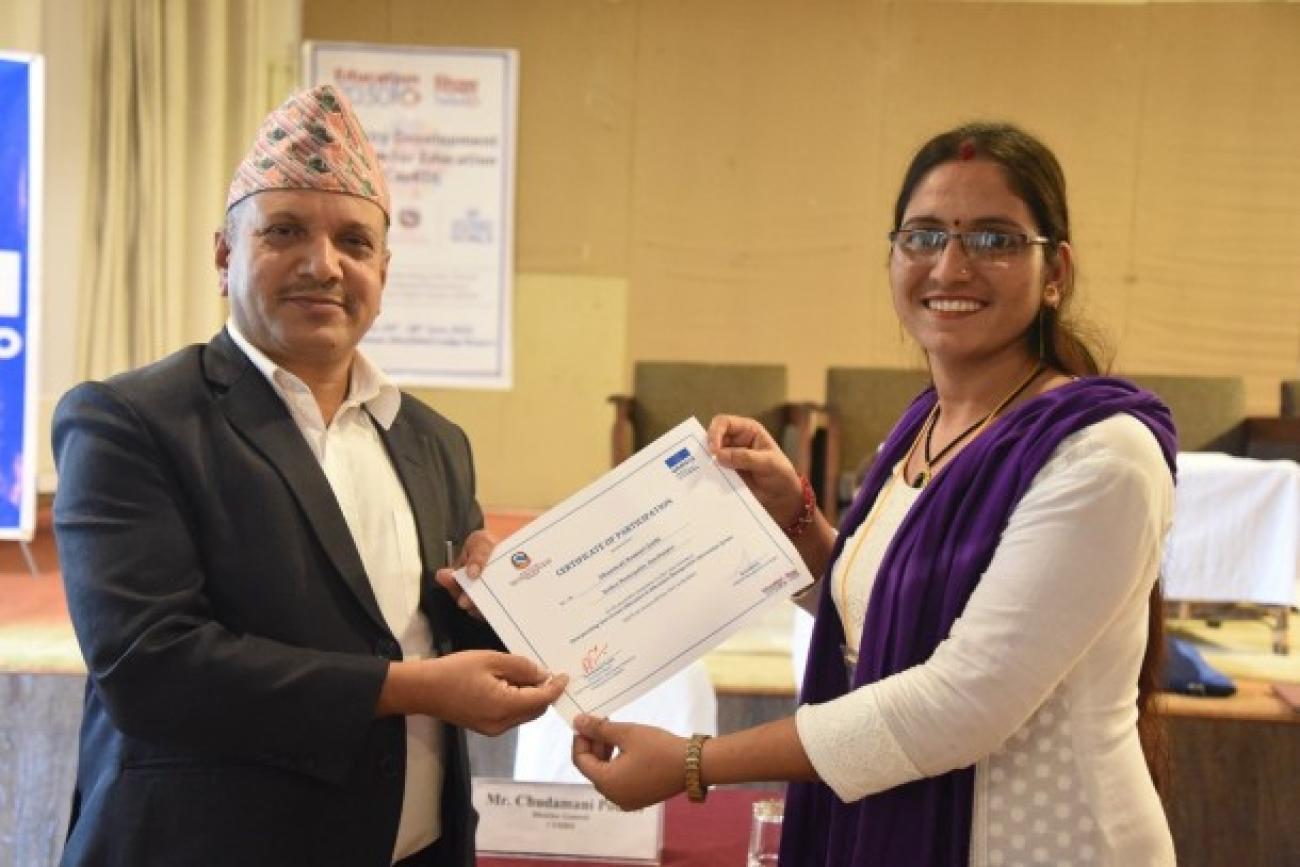Integrating non-formal education data into Nepal’s Education Management Information System

Non-formal education (NFE) and life-long learning (LLL) are being increasingly prioritized in Nepal.
UNESCO’s policy-level support has been instrumental in the adoption of a new National Education Policy in 2019 that explicitly recognized the importance of literacy and NFE. This policy gave clear direction to the government regarding their roles and responsibilities to develop education plans and programmes including NFE. Nepal’s new School Education Sector Plan (2022-2032) has a dedicated output on data for NFE and LLL, asserts the need to include NFE in its public annual report on school education, and has a dedicated chapter on NFE and LLL for which UNESCO’s Capacity Development for Education (CapED) programme support was instrumental. Notably, there has also been an increase in the earmarked budget for NFE and LLL, rising from 0.5% of the previous year’s overall education budget to 0.8% in 2022.
One of the key ways to improve timely planning, informed policy dialogue and reliable monitoring on NFE and LLL is increasing the availability of quality data on these areas. Nepal’s current Integrated Education Management Information Systems (IEMIS) functions digitally and produces information on schools nationwide. However, when it comes to NFE and LLL there are gaps. Today, data on NFE is still being managed manually which creates delays in the supply of quality and accurate information. UNESCO has been supporting the Government at the central and local level to better integrate NFE into their IEMIS. The availability of more and better quality NFE data will contribute to informing decision-making and planning on NFE, shedding light on issues of inclusion and gender equality through sex disaggregated data, and identifying and targeting disadvantaged and vulnerable groups who could benefit from lifelong learning opportunities.
Following the recommendations of two major UNESCO reports on NFE - NFE-MIS evaluation (2018) and NFE synthesis report (2019) – the CapED Programme identified the need to support the local and provincial levels to develop the capacities of officials on measuring NFE indicators and managing the NFE-MIS for better sector-wide monitoring. In 2019, the Government requested UNESCO’s support to strengthen the IEMIS.
In 2021, based on the recommendations of the 2018 NFE-MIS report, UNESCO in collaboration with CEHRD and MoEST provided technical support to develop a training manual on incorporating the component of NFE in the existing IEMIS. Based on this manual and in collaboration with CEHRD, in 2022, the Programme developed the capacities of 50 local level officials, ten of whom were women, across 42 of the country’s districts. The workshop equipped local government officials with knowledge on the existing IEMIS and on linking the NFE sub-sector into the IEMIS. They learned skills on data collection on NFE and LLL.
“The incorporation of data related to NFE in IEMIS is very important and necessary. It makes it easy to understand the state of education from the local level to the entire country,” says Dhanmati Kumari Joshi, a technical support officer in an education unit from Bedkot municipality, who took part in the training to incorporate NFE in the IEMIS. She explains that “after finding out the population groups that are left out of mainstream education, education plans can be developed and implemented.”
Looking ahead, the Programme will provide technical support to establish a mechanism which will help education officials and NFE stakeholders to use and interpret the new data on NFE being added to the EMIS. The Programme will ensure education officials and NFE stakeholders are oriented on using the mechanism. This will facilitate data on NFE being identified to be included in the Governments annual reporting on education. With clear, accessible datasets on NFE and trained staff who can identify key information, the Government will be in a stronger position to conduct its SDG4 mid-term review due to take place this year and beyond this, to monitor progress towards SDG4 targets in the long term.

